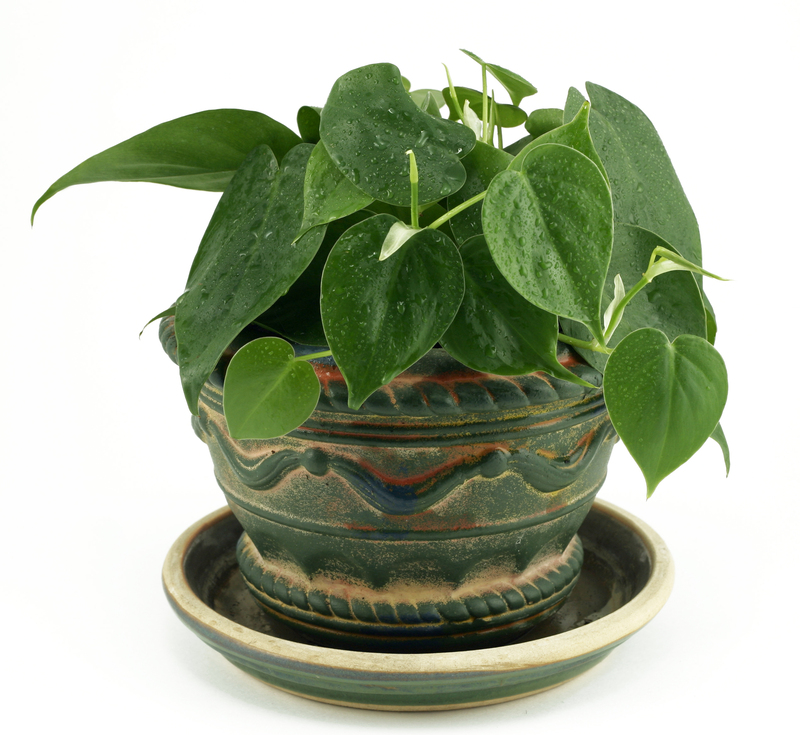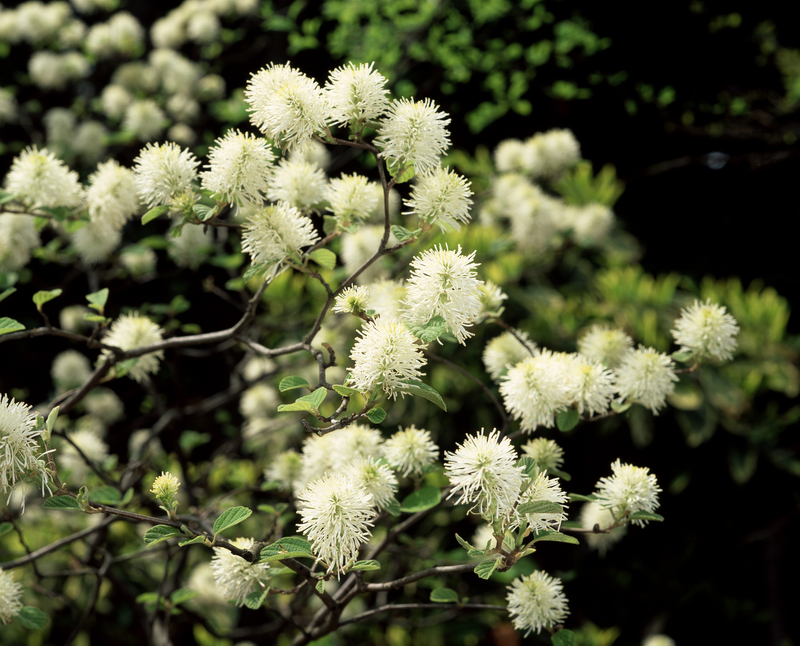Shielding Garden Treasures from the Cold
Posted on 13/09/2025
Shielding Garden Treasures from the Cold: A Complete Guide
When chilly winds begin to blow and frost threatens your beloved garden, one pressing concern emerges for every gardener: Shielding garden treasures from the cold. Protecting your plants and outdoor assets is essential, not only to preserve their beauty but to ensure their survival through the harshest months. This comprehensive guide reveals tested methods, useful tips, and innovative approaches to help keep your garden treasures safe from winter's chill. Whether you own delicate perennials, exotic succulents, or valuable garden ornaments, you'll find expert advice here to shield your outdoor gems from cold stress.

Why Protecting Your Garden from Cold Weather Is Crucial
Winter, while beautiful, can be devastating for gardens. _Freezing temperatures_, biting winds, and frost heave all threaten to undo a season's worth of nurturing. Many plants and decorative items, which we consider garden treasures, are especially vulnerable. Without appropriate action, you risk:
- Plant loss due to frost damage or dehydration.
- Irreversible injury to sensitive bulbs, shrubs, and perennials.
- Damage to decorative items like statues, fountains, and containers.
- Soil erosion and nutrient loss.
- Stunted growth or delayed flowering in the next season.
With some planning and the right techniques, however, shielding your garden from the cold can be straightforward, effective, and even enjoyable.
Understanding Your Garden's Unique Needs
Know Your Climate Zone
The first step to cold-proofing your garden treasures is to identify your USDA hardiness zone. Each zone has different minimum temperatures and plant survival rates. This information helps you select planting strategies and protection methods best suited to your garden's location.
Assess Your Garden's Vulnerabilities
- Identify frost pockets: Low areas or spots where cold air settles.
- Locate wind-exposed zones: Plots most at risk from gusty winter weather.
- Consider the sun's direction: South-facing gardens fare better than north-facing.
- Check soil drainage: Wet soils freeze more deeply and can harm roots.
Tip: Keep a gardening journal to note which plants suffer most during winter. Over time, you'll develop a tailored winterization plan for maximum success.
Best Practices for Shielding Garden Treasures from Frost and Freeze
1. Mulching for Winter Protection
Mulch is one of the most effective and versatile tools for shielding garden valuables from icy conditions. It acts as a natural blanket that protects plant roots, moderates soil temperature, and conserves moisture.
- Organic Mulches: Bark chips, straw, shredded leaves, or pine needles improve soil quality as they decompose.
- Inorganic Mulches: Pebbles or gravel work well around succulents and container plants.
- Timing: Apply mulch in late autumn after the ground has chilled but is not yet frozen.
- Depth: Add a layer 2-4 inches thick. Avoid piling mulch directly against plant stems to prevent rot.
2. Row Covers, Cloches, and Tunnels
Physical barriers shield delicate plants from frost, snow, and biting winds. These tools are invaluable for protecting your prized garden items from cold snaps:
- Row covers: Lightweight, breathable fabrics insulate beds while allowing sunlight and rain.
- Cloches: Glass or plastic domes provide individual coverage for tender seedlings and low-growing plants.
- Tunnels: Large, hoop-supported covers are ideal for longer beds and rows of vegetables.
- DIY tip: Reuse old water jugs, milk cartons, or even plastic bottles as mini-cloches.
3. Selecting Hardy Plants and Strategic Grouping
Another preventive strategy is to choose species that are appropriately hardy for your climate, or group similar plants together for shared protection.
- Choose cold-hardy varieties for exposed locations.
- Group fragile or exotic plants in sheltered microclimates or against south-facing walls.
- Use shrubs and hedges to shield beds from prevailing winds.
4. Winterizing Garden Structures and Containers
Garden treasures aren't limited to plants alone. Fountains, birdbaths, pots, and sculptures need cold weather protection to prevent cracks and fading.
- Drain water features and store pumps indoors.
- Move delicate containers to sheltered areas or indoors.
- Elevate pots on bricks to allow drainage and prevent frost damage at the base.
- Cover delicate statuary with burlap or breathable covers. Avoid plastic which can trap moisture.
5. Smart Watering Practices Before the Ground Freezes
Dehydration is a silent winter killer. Moist soil retains heat better than dry soil, offering extra insulation for roots. Fully hydrate your garden before the first hard freeze:
- Water thoroughly in late autumn considering your climate's rainfall and drainage.
- Avoid watering during freezing temperatures; water in the morning when it's warmer.
- Disconnect hoses and sprinklers to prevent ice blockages.
Protecting Special Garden Treasures: Unique Strategies
Tender Perennials and Bulbs
Flowers like dahlias, cannas, and gladiolus rarely survive deep freezes. For such gems, the best protection is sometimes lifting and storing:
- Dig up bulbs after the first frost kills the foliage but before the ground freezes solid.
- Let them dry and store in sawdust, perlite, or peat moss inside a cool, dark, frost-free location.
- Check periodically for rot or mold and remove affected bulbs immediately.
Evergreens and Woody Ornamentals
Evergreens lose moisture through their leaves, even in winter. When the ground freezes, they can't replace it and may desiccate or "winter burn."
- Water deeply before the first freeze.
- Spray anti-desiccant products to reduce water loss in broadleaf evergreens.
- Wrap with burlap if exposed to harsh winds or reflected road salt.
Vegetable Patch Protection
- Extend the harvest with cold frames or heavy row covers for cold-hardy varieties such as spinach, kale, and carrots.
- Mulch thickly over root crops for winter digging.
- Harvest sensitive crops before the first heavy frost, but many brassicas improve in flavor after light frosts!
Common Mistakes in Winter Garden Protection (And How to Avoid Them)
- Covering too early: Trapping warmth too soon can encourage new growth that's more susceptible to cold.
- Using non-breathable covers: Plastic sheeting may retain too much moisture against plants, causing fungal problems.
- Ignoring root protection: Mulch and wind barriers are as essential for roots as for above-ground parts.
- Forgetting to check periodically: Harsh weather can pull covers loose or expose roots, so regular inspection is key.
Inspiration: Frost-Resistant Garden Design
Choose the Right Plants
Mixing structure and seasonality into your garden ensures year-round beauty and easier cold weather maintenance.
- Incorporate native plants adapted to your climate's temperature swings.
- Interplant evergreens for winter color and shelter.
- Add structural elements like arbors and trellises that withstand winter but provide aesthetic interest.
Seasonal Change: Understanding Plant Dormancy
Not all dying leaves signal distress. Many plants enter dormancy for self-protection, returning full of vigor when warmth returns. Knowing when to cut back, shield, or simply let nature take its course is vital for long-term success.
Indoor Options: Bringing Garden Treasures Inside
- House fragile potted plants indoors or in an unheated garage or shed with window light.
- Use grow lights or sunny windowsills to maintain Mediterranean or tropical species.
- Monitor for pests that can hitchhike indoors.
The Eco-Friendly Approach to Cold Weather Protection
Be mindful of your environmental impact while shielding your garden treasures from cold:
- Choose biodegradable mulches and reuse fabric row covers year-to-year.
- Avoid harsh chemicals or antifreezes in water features that could harm wildlife.
- Create wildlife shelters using brush piles or untidy corners to aid beneficial insects and birds over winter.

Year-Round Preparation: Plan Ahead
Successfully guarding your garden treasures from winter's freeze involves more than a last-minute scramble. By integrating cold protection into your annual routine, you'll enjoy more resilient, thriving plants and decor.
- Replenish and reapply generous layers of mulch each autumn.
- Regularly inspect and repair protective structures like fences, tunnels, and cloches.
- Update your garden journal after each winter, noting what worked and what could improve.
Conclusion: Cherishing and Defending Your Garden Treasures
Shielding garden treasures from the cold is both an act of vigilance and a celebration of nature's resilience. While winter can be a daunting time for gardeners, a little knowledge and preparation make all the difference. By combining soil wisdom, clever covering, plant choice, and strategic indoor sheltering, you can preserve your garden's beauty and bounty for years to come.
- Remember: Mulch, cover, water, and monitor -- these four pillars will transform your garden protection strategy forever.
- Research and adapt: As climate conditions change, so should your cold-weather tactics.
- Enjoy the reward: Nothing is more satisfying than seeing your cherished plants and features reawaken come spring, ready to dazzle once more.
Shield your garden treasures from the cold, and ensure your landscape continues to bring joy -- no matter the season!

